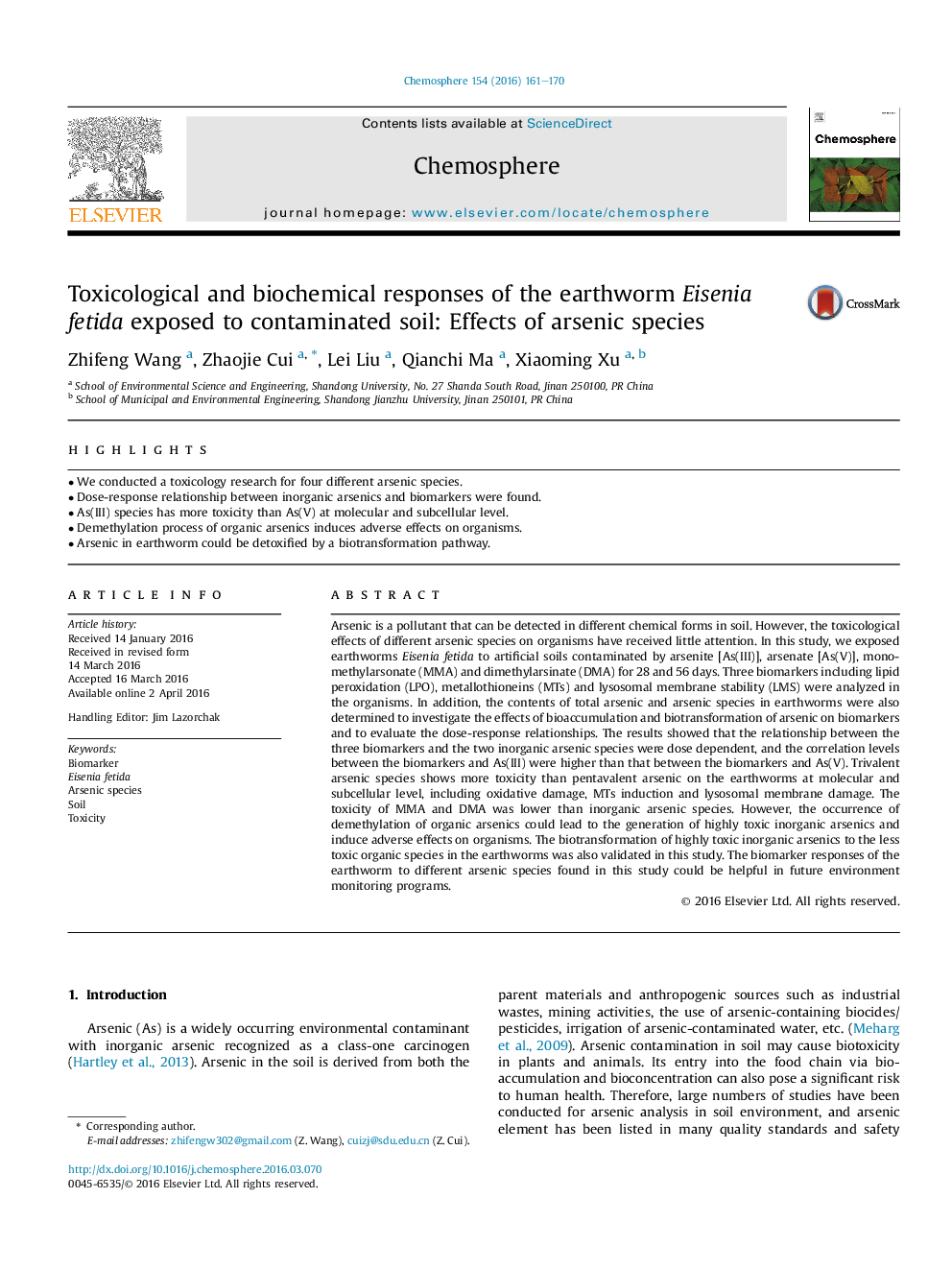| کد مقاله | کد نشریه | سال انتشار | مقاله انگلیسی | نسخه تمام متن |
|---|---|---|---|---|
| 6306674 | 1618817 | 2016 | 10 صفحه PDF | دانلود رایگان |

- We conducted a toxicology research for four different arsenic species.
- Dose-response relationship between inorganic arsenics and biomarkers were found.
- As(III) species has more toxicity than As(V) at molecular and subcellular level.
- Demethylation process of organic arsenics induces adverse effects on organisms.
- Arsenic in earthworm could be detoxified by a biotransformation pathway.
Arsenic is a pollutant that can be detected in different chemical forms in soil. However, the toxicological effects of different arsenic species on organisms have received little attention. In this study, we exposed earthworms Eisenia fetida to artificial soils contaminated by arsenite [As(III)], arsenate [As(V)], monomethylarsonate (MMA) and dimethylarsinate (DMA) for 28 and 56 days. Three biomarkers including lipid peroxidation (LPO), metallothioneins (MTs) and lysosomal membrane stability (LMS) were analyzed in the organisms. In addition, the contents of total arsenic and arsenic species in earthworms were also determined to investigate the effects of bioaccumulation and biotransformation of arsenic on biomarkers and to evaluate the dose-response relationships. The results showed that the relationship between the three biomarkers and the two inorganic arsenic species were dose dependent, and the correlation levels between the biomarkers and As(III) were higher than that between the biomarkers and As(V). Trivalent arsenic species shows more toxicity than pentavalent arsenic on the earthworms at molecular and subcellular level, including oxidative damage, MTs induction and lysosomal membrane damage. The toxicity of MMA and DMA was lower than inorganic arsenic species. However, the occurrence of demethylation of organic arsenics could lead to the generation of highly toxic inorganic arsenics and induce adverse effects on organisms. The biotransformation of highly toxic inorganic arsenics to the less toxic organic species in the earthworms was also validated in this study. The biomarker responses of the earthworm to different arsenic species found in this study could be helpful in future environment monitoring programs.
Journal: Chemosphere - Volume 154, July 2016, Pages 161-170